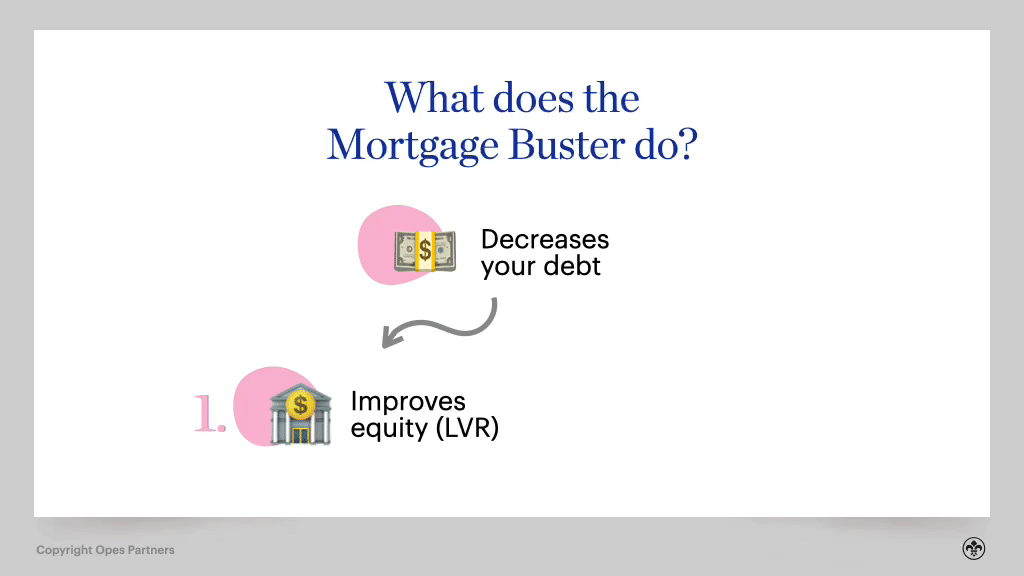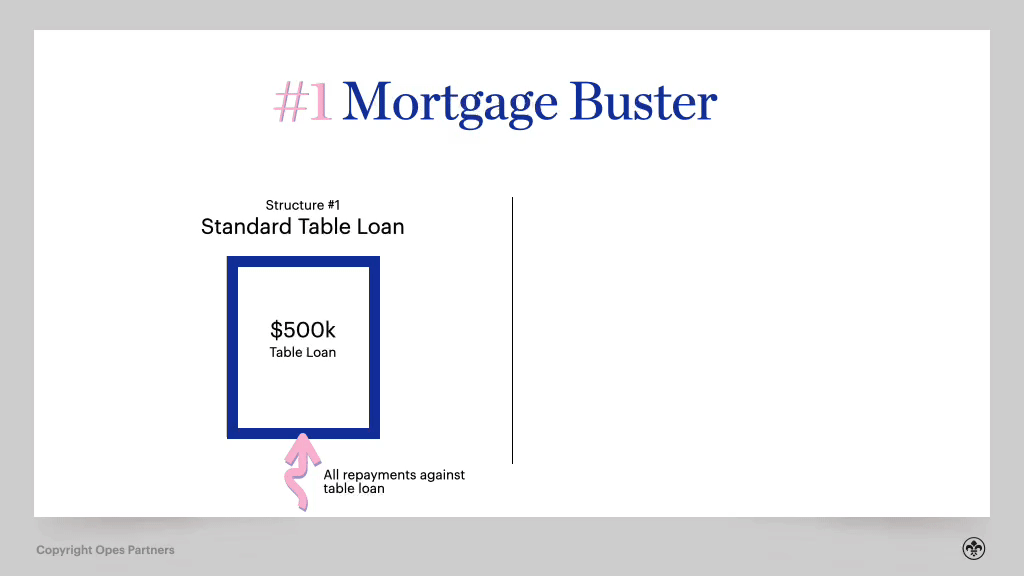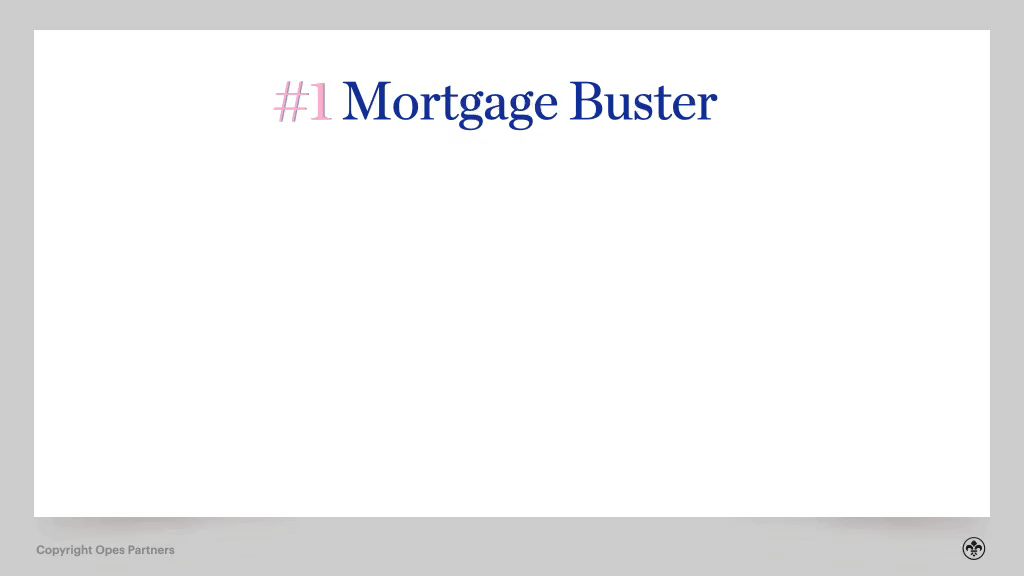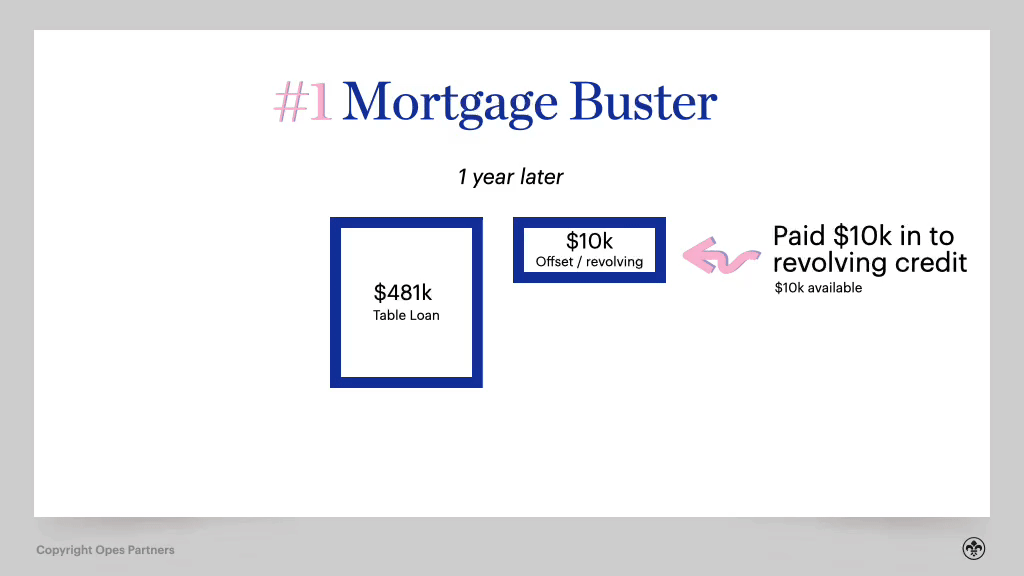
Mortgages
How do I get a mortgage and pay it off?
This 9,500-word Epic Guide to Mortgages is the definitive article on how to get a mortgage and pay it off faster, today in 2026. The Ultimate Guide.
Mortgages
10 min read

Author: Peter Norris
Mortgage broker for over 10 years, property investor and Managing Director at Opes Mortgages
Reviewed by: Ed McKnight
Resident Economist, with a GradDipEcon and over five years at Opes Partners, is a trusted contributor to NZ Property Investor, Informed Investor, Stuff, Business Desk, and OneRoof.
The not-so-secret keys to property investment are: equity and servicing.
Equity, because most property investors don’t buy a property with cash.
Instead, once they’ve built up enough equity in their property, it can be used to buy the next investment property. And the one after that.
And servicing (the income and expenses side of your mortgage application) is important because the bank needs to make sure you can afford the lending you take out.
Both equity and servicing will likely increase over time as your home’s value goes up and you slowly pay off your mortgage.
However, this gradual pace might not suit gung-ho investors wanting to hurry things along.
So… is there a way to speed up?
Yes, and it’s called the Mortgage Buster strategy.
In this article, you’ll learn what the Mortgage Buster is and if you can use it to get closer to your next investment property.
If you have any questions or thoughts, please leave them in the comments section below.
The Mortgage Buster is a strategy you can use to get closer to your next investment property.
Essentially, it works by paying down your mortgage more aggressively, which helps both your equity and servicing.
This is done by making extra repayments against your mortgage, but doing it in a flexible and goal-orientated way. And you do this by using a revolving credit or an offset account.
A revolving credit acts as a savings goal for the year, and every extra cent you can possibly scrimp together goes towards achieving that savings goal.

There’s obviously quite a bit more involved with what a revolving credit is.
Let’s explain in more detail.
Using the Mortgage Buster, your mortgage is split into a minimum of two parts:
Part #1 – You pay down at the minimum rate
Part #2 – You attack aggressively using a revolving credit or offset account.
The first part of this strategy still leaves the bulk of your loan on a fixed-term interest rate (e.g. one-year at 4.5%).
But you break off a smaller chunk of your mortgage to be put into a revolving credit or an offset account, depending on what your bank offers.

These mortgage products are on a floating interest rate, which means they are more expensive at the outset.
However, revolving credit and offset accounts are a type of mortgage product that are enormously useful for property investors and those just starting out with their portfolio.
They are a type of mortgage that provides flexibility to pay down your mortgage aggressively.
Even for people who are familiar with what they are … revolving credits can be complex to grasp.
The most common way for it to be described is “like a giant overdraft”.
Here’s how it works: You chip off a part of your mortgage and make it work like a transactional account.
So, it’s like having a big overdraft, but at a mortgage interest rate.
But rather than have a 15% interest rate like some other loans and overdrafts, it’s on a home loan rate, which might be 5% to 6% at today’s rates.

In its simplest terms, while you continue to make your minimum mortgage repayments you also put any spare money into your revolving credit.
But, like an overdraft, you can also take that money out at any time.

All your salary and wages go into it, and then out comes all your expenses.
But unlike a standard mortgage, money that is put into your revolving credit can be taken out just as easily, the same as any other everyday bank account.

Some investors find this flexibility really pushes them to pay down that mortgage more rapidly, with the comfort of knowing you can access that money in an emergency.
For instance, if you’ve managed to put $10,000 into your revolving credit, but then your car breaks down, you can take that money back out to cover repairs.
If you were to try do that with your standard P+I loan, not only are you limited in how much extra you can pay back (5% for most banks without incurring extra fees) you will have to apply to get that money back out.
That doesn’t mean revolving credits are all rosy. But, we’ll go through the cons you need to be aware of shortly.
You can’t set your whole mortgage up as a revolving credit – the bank wouldn’t let you anyway.
Generally, a revolving credit needs to be at least $10k, and no more than $250k.
So, your revolving credit should usually be how much you think you could save into it over the course of a year.
This means you have a small, definable goal with a set timeframe of when you want to pay it off by.
For instance, if you thought you could pay an extra $200 a week as part of the Mortgage Buster, then set up your revolving credit for around $10,000. If you think you can do $400 a week, set it up to be around $20,000.
Because revolving credits are floating accounts, you will typically pay a higher interest rate on these accounts compared with your main mortgage.
This means these accounts tend to cost more money if paid down slowly, and it also means the interest you need to pay will fluctuate as the bank can change the interest rate at any time.
This is why it’s best not to make your revolving credit too large.
The purpose of the Mortgage Buster is to change your spending behaviour by giving you a set goal to work towards.
What we mean by this is while you continue making minimum repayments on your main loan, extra money you can spare is given directly to the revolving credit or offset.
This does the following two things:
The Mortgage Buster, by dividing your mortgage into smaller chunks, has given you a specific goal to work towards.
For instance, let’s say you have a $500,000 mortgage. If you just increase your repayments after talking to the bank, you won’t clearly see the impact of those payments.
Pay an extra $5,000 off your mortgage, and the balance will have gone down to $495,000. It’s only moved by 1 per cent.
But, put that same $5,000 into a $10,000 revolving credit and you’re 50 per cent of the way towards your mini goal.
Sometimes the mental payoff for being able to see this progress can make all the difference to your motivation.
Secondly, these types of accounts are flexible. If you put money in, you can take it out. This gives you the ability to be really aggressive.
You can challenge yourself to transfer more money into the account to decrease your mortgage.
But you have the security of knowing that if you do overstretch yourself (or have an emergency), the money is still available.
However, if you took the easy route and just increased your mortgage payments on one large mortgage, for instance on a 1-year fixed term, you are locked into that higher repayment for the next 12 months.
Secure a comfortable retirement with 3 easy steps
Book your free sessionYup, we hear you – you don’t have bucket loads of money to make extra mortgage repayments.
You’re already tapped out with your mortgage, bills and childcare. So, how do you find the extra money to put into your revolving credit?
The usual advice is to decrease what you spend, or increase what you earn. Here are two more specific options –
Let’s say you’re an emerging investor. You own your first home and you want to bring in some extra income to pay down your mortgage. One common option is to get flatmates in.
For instance, if you’re paying off a $450,000 mortgage (on a 30-year term at 4% interest) your minimum repayment will be $495 per week.
But if you get a flatmate in and charge them $200 a week, you can round up your mortgage repayments to $700.
If you adjusted your repayments and kept that up for the life of your loan, you’d pay off your mortgage 13 years earlier, and would save almost $152,000 in interest over the life of your mortgage.

OK, so you’ve got your flatmate in – what other options do you have for increasing your income?
Your 3 main options are:
Generally, if an investor hasn’t had a pay rise in a while, using the Mortgage Buster strategy can be a good trigger to have that conversation.
If your bank doesn’t offer a revolving credit, they’ll likely offer an Offset account instead.
An Offset account is an alternative to revolving credit. It has similar benefits, but it works slightly differently.
The main difference with an offset account is that it has two accounts (rather than one, like the revolving credit). The two accounts are:
Said another way, rather than just one account with a revolving credit that sees money come in and out, separate accounts offset each other.
How it works is part of your mortgage is put on a floating rate in one account. Then you have another account that you put money into. You are then only charged interest on the balance.
For instance, let’s say you have a $30,000 floating loan, and you have $20,000 deposited in your Offset accounts.
In this scenario, your interest is only charged on the $10,000 difference, or the part of your mortgage that hasn’t been offset.
Usually you won’t have a choice. Your bank will either offer a revolving credit or an offset account.
But typically if you like to live on a budget and are good with money, you’ll use revolving credit. It you prefer to have your money bucketed in different accounts, you’ll use an offset.
Offset accounts work great for people who like to bucket money.
So, if you’re the type of person that likes to have separate accounts set up for: holidays, furniture, school fees, savings – then an offset account is probably going to work well for you, whereas a revolving credit is much better for people who keep to a strict budget.
When you’re this type of person, you’ll suit having a revolving credit in one account because you’ll only spend what you set out to and the rest will build up.
Also, it’s important to differentiate between a personal or investment loan.
An offset account is a better option for investors, because of interest deductibility.
However, a revolving credit is better for a personal mortgage. Not only does the deductibility not matter, but once you pay down the revolving credit your repayments stop as well.

Most mortgage brokers say that everyone with a mortgage should use revolving credit (if used correctly).
This is because its flexibility allows you to saving aggressively.
But, there is a risk that you don’t use it the right way. That’s because the voluntary money you put away isn’t locked away. Instead, it’s there for you to freely – and sometimes all-too-easily – take out and spend.
This is why some financial advisors call them “revolting” credits, because they don’t always work as well as they should on paper.
So, the Mortgage Buster strategy is a great fit for you if you are disciplined with money, and have the means to make extra payments to pay down your revolving credit quickly.
But if your money personality doesn’t like to save, and would be way too tempted by the large lump sum of available money sitting there … you might think about just upping your mortgage payments, so you don’t have access to the cash.
You don’t have to wait for your property to come off a fixed-term agreement to get this strategy underway.
To put the Mortgage Buster into practice just talk to your mortgage advisor.
Together, you’ll work out a reasonable amount to set up as revolving credit. They will then set it up for you. If you’re looking for a recommendation for a mortgage adviser, we always recommend Opes Mortgages (our sister company), although there are other good mortgage advisers.
Mortgage broker for over 10 years, property investor and Managing Director at Opes Mortgages
Peter Norris, a certified mortgage adviser with 10+ years of experience, serves as the Managing Director at Opes Mortgages. Having facilitated over $1.2 billion in lending for 2000+ clients, Peter is a respected authority in property financing. He's a frequent writer for Informed Investor Magazine and Property Investor Magazine, while also being recognized as BNZ Mortgage Adviser of the Year in 2018 and listed among NZ Adviser's top advisers in 2022, showcasing his expertise.
This article is for your general information. It’s not financial advice. See here for details about our Financial Advice Provider Disclosure. So Opes isn’t telling you what to do with your own money.
We’ve made every effort to make sure the information is accurate. But we occasionally get the odd fact wrong. Make sure you do your own research or talk to a financial adviser before making any investment decisions.
You might like to use us or another financial adviser